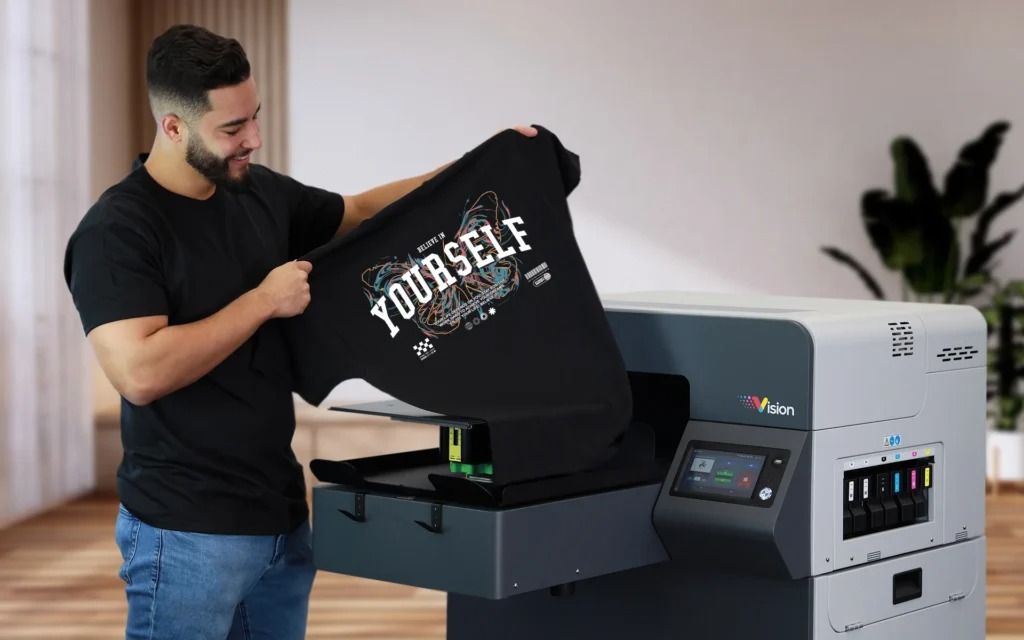T-shirt printing has evolved into a massive industry, with countless entrepreneurs and hobbyists creating custom apparel for personal use, promotional purposes, or retail. T-shirt printers, the tools that bring these designs to life, have played a pivotal role in this revolution tshirt printer. This article explores the different types of t-shirt printers, their technologies, and how they’ve changed the apparel printing landscape.
1. Introduction to T-Shirt Printing
T-shirt printing is the process of applying a design, artwork, or text to fabric—usually cotton, polyester, or blends. This has become a primary method for businesses to create branded merchandise, while it also serves the individual consumer looking for something unique and personalized. Over the years, technology has advanced, introducing several types of t-shirt printers with distinct features, capabilities, and advantages.
2. Types of T-Shirt Printers
a) Screen Printing (Silk Screening)
Screen printing is one of the oldest and most widely-used t-shirt printing methods. In this technique, a stencil (or screen) is used to apply layers of ink on the printing surface. Each color requires a different screen, and the ink is pushed through the screen onto the t-shirt fabric.
Pros:
-
High-quality, long-lasting prints.
-
Cost-effective for bulk printing.
-
Vibrant colors.
Cons:
-
Time-consuming setup for multi-color designs.
-
Not ideal for designs with lots of colors or complex details.
Screen printing is still the go-to choice for large-scale commercial printing but has seen competition with newer technologies.
b) Direct-to-Garment (DTG) Printing
Direct-to-Garment printing uses inkjet technology to print designs directly onto t-shirts. The process works similarly to how a home inkjet printer prints on paper, but the printer is designed to handle fabric and uses textile-specific inks.
Pros:
-
Ideal for detailed designs with many colors.
-
Can print on demand—great for small orders.
-
No need for setup or stencils.
-
Works well with complex designs and gradients.
Cons:
-
Slower than other methods for large quantities.
-
Ink costs can add up.
-
Not as durable as screen printing for mass production.
DTG is ideal for small businesses or artists looking to create custom, one-off designs or limited-run products.
c) Heat Transfer Printing
Heat transfer printing involves printing a design onto a special paper, which is then transferred to the t-shirt using heat and pressure. The process can be done using either a vinyl sheet or inkjet-printed transfer paper.
Pros:
-
Great for small runs and custom orders.
-
Can easily be done in-house without complex machinery.
-
Good for full-color designs.
Cons:
-
Transfers may fade after multiple washes.
-
Not suitable for large orders.
-
Limited durability compared to screen printing or DTG.
Heat transfer printing is popular for personal and custom t-shirt printing, especially when high-quality, multi-color designs are needed quickly.
d) Sublimation Printing
Sublimation is a unique method in which dye is turned into gas and then absorbed into the fabric, becoming part of the material itself. This method works best on polyester or polymer-coated fabrics and produces vibrant, long-lasting designs.
Pros:
-
Extremely durable and will not peel or fade.
-
Ideal for all-over printing.
-
Perfect for polyester fabrics.
Cons:
-
Limited to synthetic fabrics like polyester.
-
Not ideal for dark-colored garments (prints are generally visible only on light-colored fabrics).
Sublimation printing is favored in sports apparel and high-performance wear, as it produces designs that won’t wear off over time.
e) Vinyl Cutting
Vinyl cutting involves cutting out shapes or text from sheets of colored vinyl and then applying them to a shirt with heat. This method is commonly used for designs with one or two solid colors.
Pros:
-
Durable and long-lasting.
-
Great for custom designs like names and numbers.
-
Suitable for small batches or individual prints.
Cons:
-
Limited to simple designs with fewer colors.
-
Time-consuming for larger orders.
Vinyl cutting is ideal for custom names, numbers, and logos, often seen in sports uniforms, team apparel, or personal designs.
3. Choosing the Right T-Shirt Printer for Your Needs
When it comes to choosing a t-shirt printer, the decision depends on several factors, including the order size, design complexity, fabric type, and budget. Here’s a breakdown of when each printing method is ideal:
-
For large orders with simple designs: Screen printing is the most cost-effective and efficient method.
-
For detailed, full-color designs and small quantities: Direct-to-Garment printing is perfect.
-
For one-off custom prints or small orders: Heat transfer printing or vinyl cutting works well.
-
For high-performance apparel and sportswear: Sublimation is the best choice.
4. The Future of T-Shirt Printing
The future of t-shirt printing looks promising, as technology continues to advance. Innovations such as 3D printing and eco-friendly inks are emerging, offering new possibilities for both designers and consumers. Additionally, the rise of on-demand printing services allows businesses to operate without large inventories, reducing waste and enabling more sustainable production.
One exciting trend is the use of artificial intelligence (AI) in design, helping artists create unique and innovative t-shirt prints, while augmented reality (AR) may eventually enhance how consumers interact with t-shirts before making a purchase.
